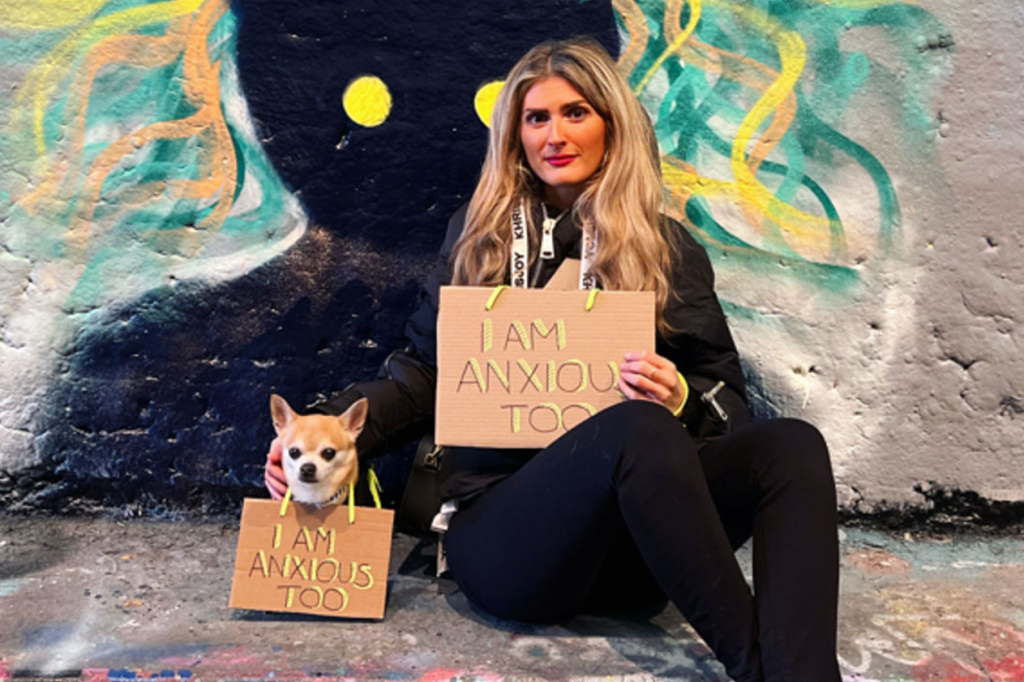Recognizing stress cues early is crucial to ensuring your dog’s well-being. London-based Holistic Dog Expert, Yasmin El-Saie, says, “Dogs may not speak our language, but they’re always communicating. While we often recognize obvious signs of distress like barking, whining, or destructive behaviour, dogs also show more subtle signs of stress that are easy to overlook”.
Subtle Signs Your Dog May Be Stressed include:
Yawning When Not Tired – Yawning can be more than just a sign of sleepiness. Dogs often yawn when they’re feeling nervous or overwhelmed, especially in unfamiliar situations or environments.
Lip Licking or Nose Licking – Frequent licking of the lips or nose, particularly when there’s no food around, can be a calming signal—your dog’s way of self-soothing.
Pacing – Restless pacing, especially back and forth in a specific pattern, can indicate anxiety. Dogs may pace before a thunderstorm, during vet visits, or when left alone.
Dilated Pupils or ‘Whale Eye’ – If your dog’s eyes are wide and the whites are showing (often called “whale eye”), it’s a classic sign of discomfort or tension.
Panting When Not Hot – Panting isn’t always about heat or exercise. If your dog is panting heavily in a cool room or when they haven’t been active, this could be caused by stress.
Sudden Shedding – Some dogs shed excessively when stressed, particularly during vet visits or car rides. This is a physiological response to anxiety.
Avoidance Behaviours –Turning their head away, hiding, sniffing the ground, or walking away slowly can all signal stress. These behaviours are often overlooked or misinterpreted as disobedience.
Changes in Body Posture – A tucked tail, crouched posture, or ears pinned back are common physical indicators that your dog isn’t comfortable.
Some of the ways you can help support a stressed dog include creating a safe space – a quiet and cosy area your dog can retreat to – this could be a dog crate, a specific room or a calm corner of your house. Yasmin also agrees that keeping a consistent routine helps dogs thrive – including regular feeding times, walks, and play sessions help reduce anxiety and build a sense of security.
Interactive toys, puzzle feeders, and scent games keep your dog’s brain busy and can reduce nervous energy – its important to offer your pet mental stimulation and and the appropriate amount of exercise for their breed, age and energy level.
Practice calm, positive reinforcement by avoiding shouting or punishments and using gentle tones, rewarding calm behaviour, and building positive associations with previously stressful situations.
Yasmin also recommends Thundershirts, which can often ease anxiety: “Thundershirts are a type of wrap designed specifically for dogs to help reduce stress and anxiety. It works by applying gentle, constant pressure to your dog’s torso, similar to the calming effect of swaddling an infant.”
Holistic treatments aren’t just for humans, Yasmin practices energy-healing Reiki, which can also benefit dogs with a variety of issues, including anxiety.
However, if your dog’s stress seems severe or persistent, professional guidance is key. There could be underlying medical or psychological issues that need attention.
Dogs are sensitive, intuitive animals and they rely on us to read their cues. By learning to spot the subtle signs of stress and responding with care, you can help your pet feel safe and loved.
Credit: Yasmin El-Saie @chilliwawa



